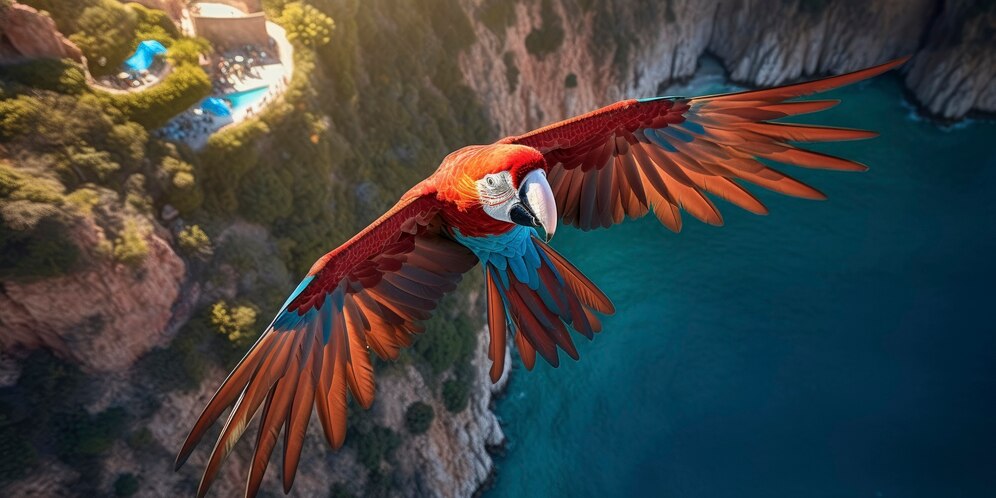Birds are one of nature’s most delightful creations, filling our skies with vibrant colors, melodious songs, and captivating behaviors. Whether you’re a seasoned ornithologist or someone who simply enjoys watching birds flit about in your backyard, there’s no denying the joy these creatures bring to our lives. In this blog post, we’ll explore various aspects of the avian world, from the diversity of species to their fascinating behaviors and the vital role they play in our ecosystem.
A Diverse Family
Birds belong to the class Aves and are characterized by feathers, beaks, and the ability to lay hard-shelled eggs. They are incredibly diverse, with over 10,000 species recognized worldwide. Here are some notable categories of birds:
- Songbirds (Passerines): These birds are known for their vocal abilities. Species like sparrows, finches, and thrushes are commonly found in gardens and forests. Their songs are often used for communication, attracting mates, and establishing territories.
- Birds of Prey (Raptors): Eagles, hawks, and owls belong to this group. Equipped with keen eyesight and powerful talons, they are skilled hunters, playing a crucial role in controlling populations of small mammals and other birds.
- Waterfowl: Ducks, geese, and swans are commonly found in wetlands and are known for their strong swimming abilities. Many species migrate long distances to find suitable breeding grounds.
- Exotic Birds: Tropical regions boast a variety of exotic species, such as parrots, toucans, and flamingos. These birds often display vibrant plumage and unique behaviors, making them a favorite among birdwatchers.
Fascinating Behaviors
Birds exhibit a wide range of behaviors that are both intriguing and essential for their survival. Here are some key behaviors to observe:
- Migration: Many bird species migrate seasonally to find food and breeding grounds. The Arctic Tern, for instance, holds the record for the longest migration, traveling from the Arctic to the Antarctic and back each year.
- Nesting: Birds display incredible ingenuity in nest building. From simple scrapes on the ground to elaborate woven structures, each species has adapted its nesting style to suit its environment.
- Feeding: Birds have diverse feeding habits based on their diet. Hummingbirds feed on nectar, woodpeckers extract insects from trees, and raptors hunt for small mammals. Their beaks are often adapted to their specific feeding methods.
- Courtship Displays: Mating rituals can be elaborate, involving colorful plumage, intricate dances, and unique calls. The courtship displays of peacocks, for example, involve spreading their tail feathers to attract females.
The Joy of Birdwatching
Birdwatching is a fulfilling hobby that allows people to connect with nature. It can be done anywhere, from urban parks to remote wilderness areas. Here are some tips for getting started:
- Essential Gear: A good pair of binoculars and a field guide can greatly enhance your birdwatching experience. Binoculars help you get a closer look, while a guide will help you identify different species.
- Choose the Right Spot: Birds can be found in various habitats. Visiting local parks, nature reserves, or your backyard can provide ample opportunities to observe different species.
- Be Patient: Birds are often skittish and sensitive to movement. Staying quiet and still can improve your chances of seeing them in their natural behaviors.
- Document Your Sightings: Keeping a birdwatching journal can help you track the species you’ve seen and their behaviors. It’s a great way to reflect on your experiences and improve your identification skills.
- Join a Community: Engaging with fellow birdwatchers can enhance your experience. Consider joining local birdwatching clubs or participating in events and workshops.
The Importance of Birds in Ecosystems
Birds play vital roles in maintaining healthy ecosystems. Here are a few contributions they make:
- Pollination: Many bird species, especially hummingbirds, are essential pollinators for various plants. Their feeding habits help facilitate the reproduction of flowering plants.
- Seed Dispersal: Birds help in seed dispersal, aiding in forest regeneration and the spread of various plant species. Fruits eaten by birds often have seeds that pass through their digestive systems, enabling new plant growth in different locations.
- Pest Control: Birds are natural pest controllers. Insects, rodents, and other small animals that threaten crops and gardens are often kept in check by bird populations.
Fun Facts About Birds
- Lifespan: Some birds have surprisingly long lifespans. For example, certain parrots can live for 50 years or more, while albatrosses have been known to live over 60 years.
- Intelligence: Crows and parrots are known for their high intelligence, capable of using tools and solving complex problems. Crows have been observed dropping nuts on roads to crack them open.
- Fast Flyers: The peregrine falcon is the fastest bird, reaching speeds of over 240 mph during its hunting stoop (high-speed dive).
- Unique Migrations: The ruby-throated hummingbird migrates alone, flying over the Gulf of Mexico without stopping, a journey of up to 500 miles.
Conclusion
Birds are more than just beautiful creatures; they are essential to our ecosystems and enrich our lives in countless ways. From their diverse species and behaviors to the joy of birdwatching and the importance of conservation, there’s a whole world to explore. Whether you’re listening to their songs in your backyard or embarking on a birdwatching adventure, take the time to appreciate these feathered wonders.
So, grab your binoculars and head outside—there’s a whole world of birds waiting to be discovered!
Feel free to modify any sections, add personal anecdotes, or include local bird species to tailor the post to your audience!



